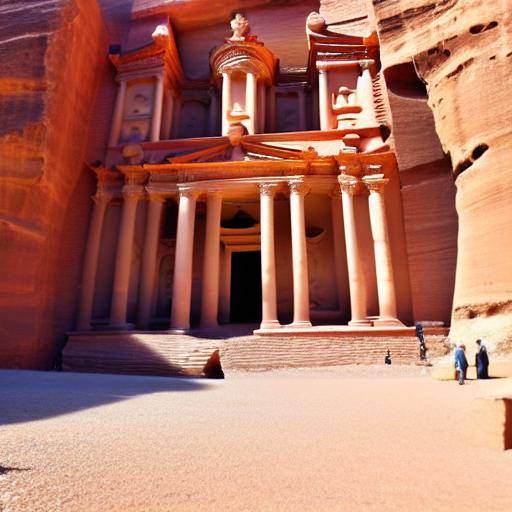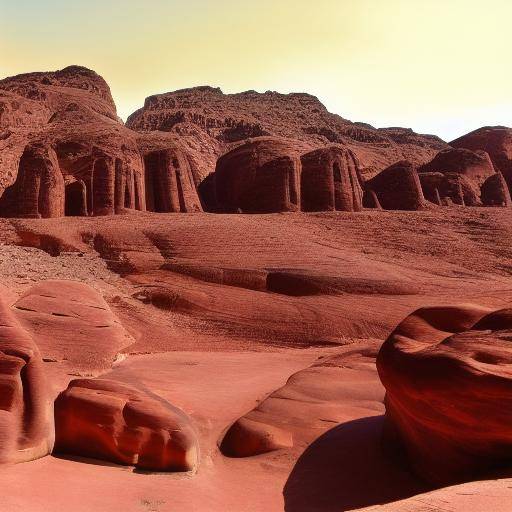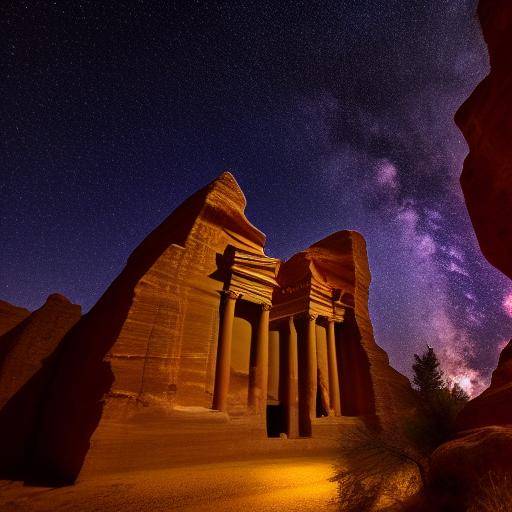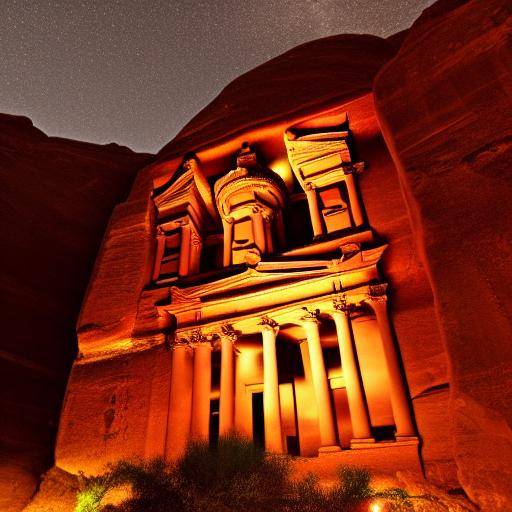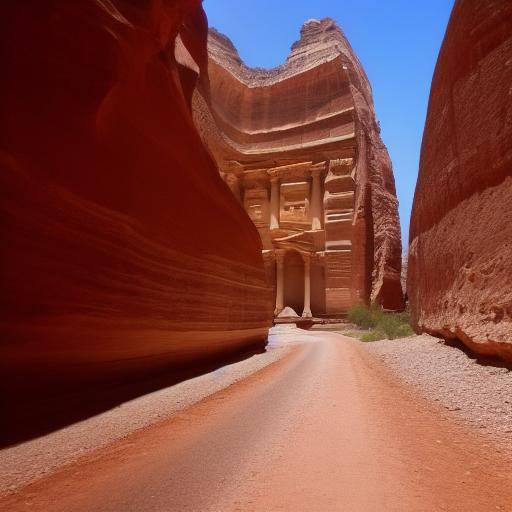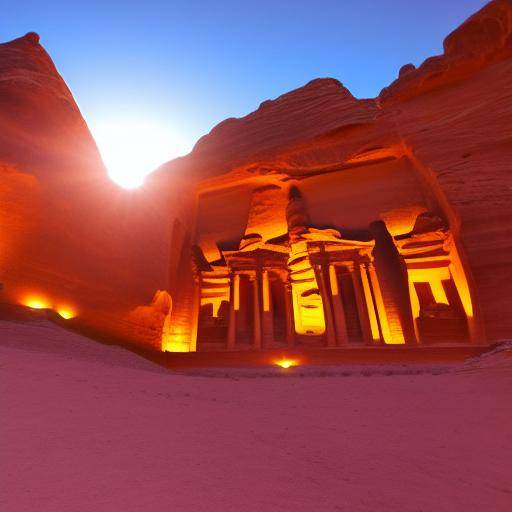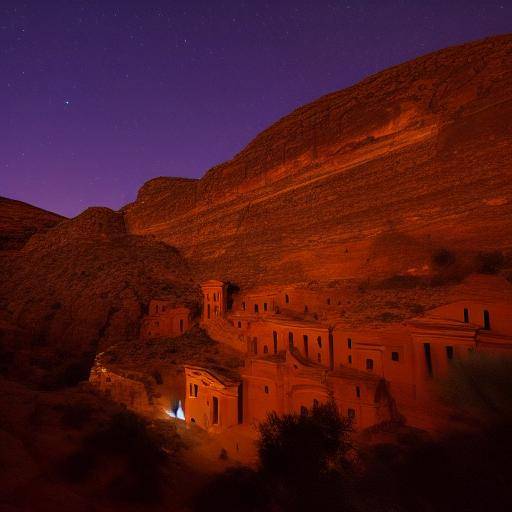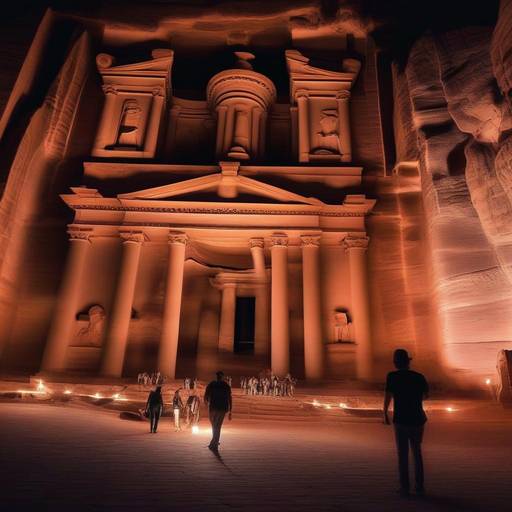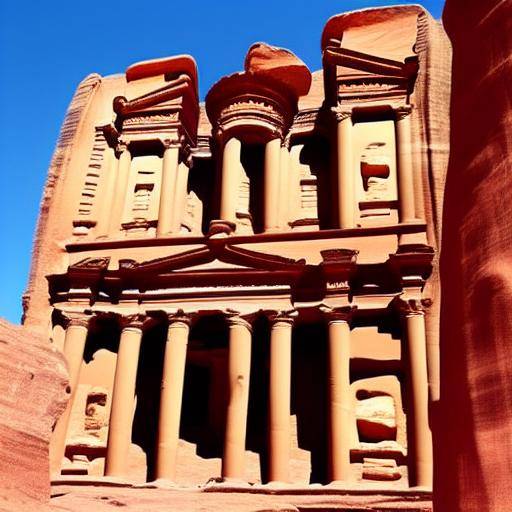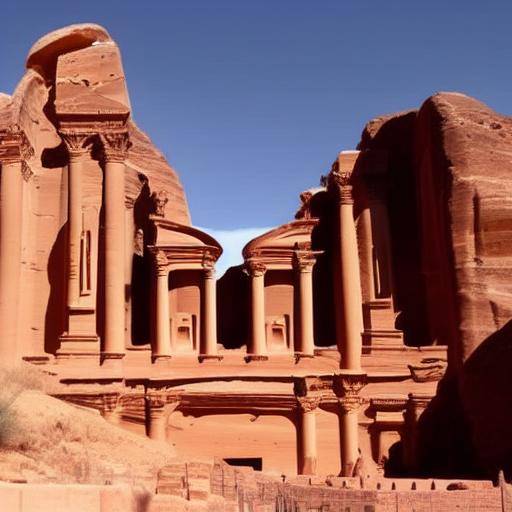
Introduction
From the gigantic temples to the intricate tombs escavadas in the mountains, Petra, the ancient city of Nabatea in Jordan, is a unique archaeological treasure that has attracted the attention of millions of visitors and scholars. However, one of the less well-known but equally fascinating aspects of Petra is its rough art, a visual testimony of life and culture in ancient times. In this article, we will explore the history, meaning and preservation of the rock art in Petra, a heritage that deserves to be discovered and protected.
History and Background
Petra's rock art is a stone testimony of everyday life, the beliefs and customs of the ancient Nebatians. These paintings, engravings and reliefs have resisted the ravages of time and offer a unique window to the past.
The technique used to create this art includes the use of natural pigments and the direct size on the rock, which speaks of the ingenuity and artistic skill of its creators. These representations include hunting scenes, human figures, animals, gods and religious symbols that shed light on the worldview of these ancient inhabitants.
The discovery and study of the rock art of Petra provides valuable information to understand the cultural and social evolution of the region over millennia. Archaeologists have dated some of these representations until the fourth century BC, indicating the historical depth of this visual heritage.
The conservation of this ancestral art is crucial, as it faces challenges such as erosion, pollution, tourism and vandalism. Various national and international institutions work tirelessly to preserve and protect this legacy for future generations.
Analysis in Deep
Petra's rock art is not only an invaluable testimony of the past, but also arouses the interest of historians, archaeologists, anthropologists and culture enthusiasts. The preservation of these paintings and engravings is essential to understand and appreciate the history and identity of Petra and its surroundings.
The geographical location of Petra and its climatic conditions create additional challenges for the conservation of the rock art. The erosion caused by rain, wind and sun represents a constant threat to these representations. The implementation of advanced conservation techniques, such as the monitoring of the state of paintings, the physical protection of sites and public awareness of the importance of preserving this legacy, is essential to ensure their survival.
The incorporation of innovative technologies, such as 3D laser scanning and photogrammetry, has allowed us to document and analyze rupestre art with an unprecedented level of detail. These tools provide researchers and conservatives with the ability to study, preserve and restore these masterpieces more effectively.
Comprehensive review
Petra's rock art has inspired contemporary artists and has generated a profound impact on modern art and culture. The influence of these representations extends to architecture, design, fashion and visual narrative, connecting the past with the present significantly.
In the context of conservation, ecotourism plays a vital role in the protection and dissemination of Petra's rock art. The development of responsible and sustainable tourist routes can contribute to the preservation of these archaeological treasures while raising awareness of their historical and cultural importance.
Comparative analysis
The richness of Petra's rock art stands out for its similarities and contrasts with other archaeological sites in the world. To compare it with other examples of rock art, such as Altamira or Lascaux, reveals the universality of human artistic expression throughout history, as well as the cultural and stylistic peculiarities that distinguish it.
The uniqueness of Petra as a city excavated in the rock, combined with its rupetic art, places it in the intersection of architecture, sculpture and painting, offering a unique perspective of human creativity in a natural environment without equal.
Practical Tips and Accessible Tips
If you have the opportunity to visit Petra, it is important to take precautions to preserve the rock art. It respects the indications and restrictions in the archaeological sites, avoids touching the representations and does not leave trash or waste in the nearby areas. Also, spread the message about the importance of preserving this heritage among your acquaintances and social networks to promote its protection and valorization.
Sector Information and Views of Experts
Experts in rough art, archaeology and conservation have expressed their admiration for the richness and value of Petra's rock art. Their testimony reflects the need for concerted action, both locally and internationally, to preserve this unique heritage. Their contributions and expertise play a key role in understanding and safeguarding these masterpieces.
Cases of Study and Applications in Real Life
Petra's rock art not only offers a window to the past, but also inspires educational projects, contemporary art works and cultural outreach activities. Its influence extends to multiple fields, from education to artistic creation, cementing its relevance in the present and future.
Future Trends and Predictions
As awareness of the importance of cultural heritage grows, the protection and diffusion of Petra's rock art is expected to intensify. The application of emerging technologies, interdisciplinary collaboration and the active commitment of the local community will be key to ensuring the preservation and admiration of these artistic manifestations for future generations.
Conclusion
Petra's rock art is much more than a set of ancient paintings and engravings; it is a tangible testimony of human creativity throughout history and an invaluable legacy that deserves to be protected. The preservation and dissemination of this ancestral art are shared responsibilities that require our attention and commitment. By knowing, appreciating and protecting Petra's rock art, we contribute to enriching our understanding of the past and preserving a fundamental part of the cultural heritage of humanity.
Frequently asked questions
What is the importance of Petra's rock art in the context of ancient art?
Petra's rock art provides an unparalleled view of the life, beliefs and creativity of the former inhabitants of the region. Its importance lies in its ability to offer a unique window to the past and enrich our understanding of ancient civilizations.
How can you contribute to the preservation of Petra's rock art?
Contributing to the preservation of Petra's rock art means respecting archaeological zones, following conservation indications, disseminating information about their importance and supporting conservation initiatives and programmes.
What measures are being taken to protect Petra's rock art?
The protection of Petra's rock art involves the implementation of advanced conservation techniques, public awareness, the limitation of the impact of tourism and the collaboration between national and international institutions.
What is the impact of tourism on the preservation of Petra's rock art?
Tourism can have a positive or negative impact on the preservation of Petra's rock art. Sustainable tourism, which promotes awareness and respect for cultural heritage, can contribute to its protection.
To what extent has the knowledge of Petra's rock art spread?
The knowledge about the rock art of Petra has been disseminated through academic publications, exhibitions in museums, documentaries and educational programs, as well as through the promotion of responsible cultural tourism.
What is the relationship between Petra's rock art and Jordan's cultural identity?
Petra's rock art is an essential component of Jordan's cultural identity, as it represents a shared historical legacy that enriches the understanding and appreciation of the country's cultural heritage.
In short, the rock art of Petra is an archaeological treasure of incalculable value that offers a unique vision of human history and creativity. Its preservation and dissemination require a joint effort of conservatives, local authorities, international community and visitors to ensure that this heritage remains appreciated and protected for generations to come.


